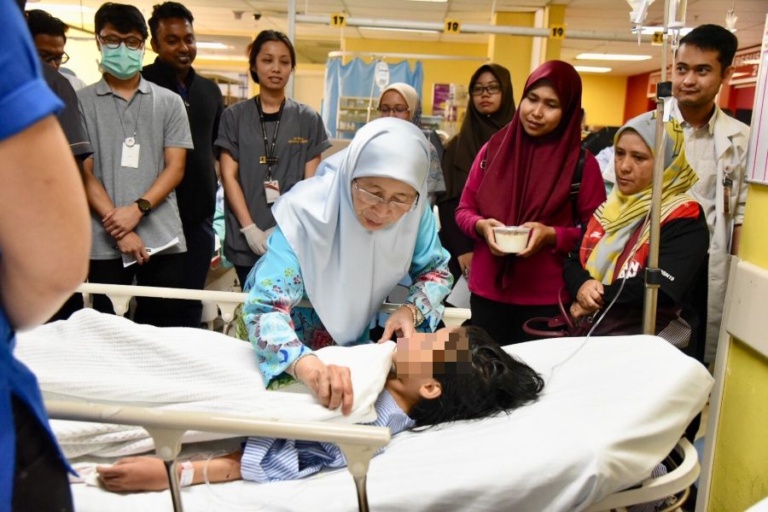Hey, did you pay attention in high school chemistry? Well, then you won’t need us, or officials, to tell you that the balloon explosion in Putrajaya that erroneous headlines attributed to the inert gas helium is now being blamed on vendors instead using the extremely (and famously) reactive gas hydrogen.
Did we win the chemistry prize for four years running? Yes.
Was our clique a dozen beakers, a Bunsen burner, and lit periodic table? Also, yes.

Sixteen individuals, including nine children, were injured in Saturday’s incident, which saw a balloon explode, causing a domino-effect of fire during the Education Ministry’s 2019 National Sports Month celebrations.
Police now believe that a cigarette lighter was used to sever a string that held all of the balloons together, and that the explosive gas hydrogen had been used to fill the lot of them.
“[The balloon was] filled with hydrogen, not helium. Hydrogen is highly sensitive and extremely flammable,” Putrajaya’s Assistant Commissioner Rosly Hasan told a press conference today.
Helium-filled balloons explode at fitness event in Putrajaya, 16 hurt | Malaysia | Malay Mail
Hello. Helium is an inert gas. It doesn’t explode like this. It had to be some other gas inside the balloons that made it ignite. Do you even chemistry? https://t.co/cyBA5xcaM4
— mrbrown (@mrbrown) October 14, 2019
Well, sounds like someone consulted the science teacher.
He added that a lighter was found at the scene, but no suspect has been identified in what could have been a very deadly mistake. Four victims are still receiving treatment for second-degree burns, from an initial six that were admitted to hospital, including an 8-year-old girl.
Deputy Prime Minister Wan Azizah, meanwhile, suggested that hydrogen may have been substituted for helium as a possible cost-cutting measure.
“This can cause all kinds of problems,” she was quoted as saying by the Malay Mail. “If you are aware there is flammable gas or substances nearby, do not use a live flame near it.”
Wishing all of the victims a speedy recovery.




